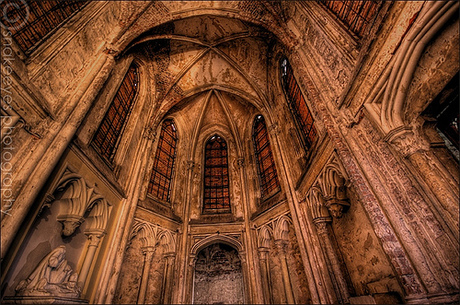Karol Scheibler's Chapel
The chapel of Karol Scheibler, next to the Old Evangelical - Augsburg Cemetery on Ogrodowa Street 43, is a major architectural work in old Lodz, Poland.
Łódź is known for its architectural monuments which form a record of the city's heritage, particularly its unique nineteenth century development. The chapel and mausoleum of Karol Scheibler are noted examples of architecture from this period.
Karl Wilhelm Scheibler (1820 - 1881) was an industrial magnate who raised the profile of Łódź within the textile industry of Europe. He created a large industrial empire on Priest's Mill (Księży Młyn). While contributing heavily to the textile industry, Scheibler was also a noted philanthropist. After his death, his widow Anna Scheibler, son Karol Wilhelm, daughter Matylda and son-in-law Edward Herbst contributed large quantities of money towards erecting buildings which would be useful to the city: schools, hospitals (such as the one on Milionowa Street, and the Children's Hospital named named after Janusz Korczak), and churches (amongst them the Jesuit's Church, and the Archicathedral of Łódź). They were renowned for donating to a range of charities.
After Karol Scheibler's death, his wife Anna erected the mausoleum-like chapel in his memory. The chapel was built between 1885-1888 by Varsovian architects Edward Lilpop and Józef Dziekoński.
Newspapers in Warsaw wrote, "the chapel is a monument executed with the greatest costs concerning our country", and "this is an uncommon work of architecture, designed with great taste and executed with unusual care." The architecture of the building was based on French and German Gothic Revival architecture. The chapel has a slender contour, finished with openwork masonry towers.
The chapel's artistic shape and quality are recognised as in keeping with the masterpieces of Neo-Gothic architecture, and the quality of the Łódź mausoleum is said to be such that there are only a handful of buildings in Europe of equal artistic quality. Karol Scheibler's remains were buried in the crypt and were joined by other members of the family, including his widow, Anna Scheibler.




